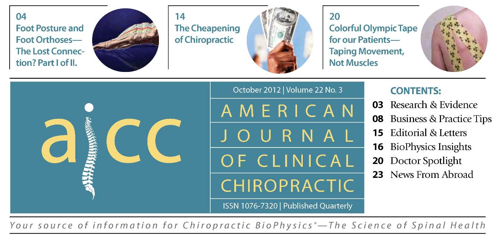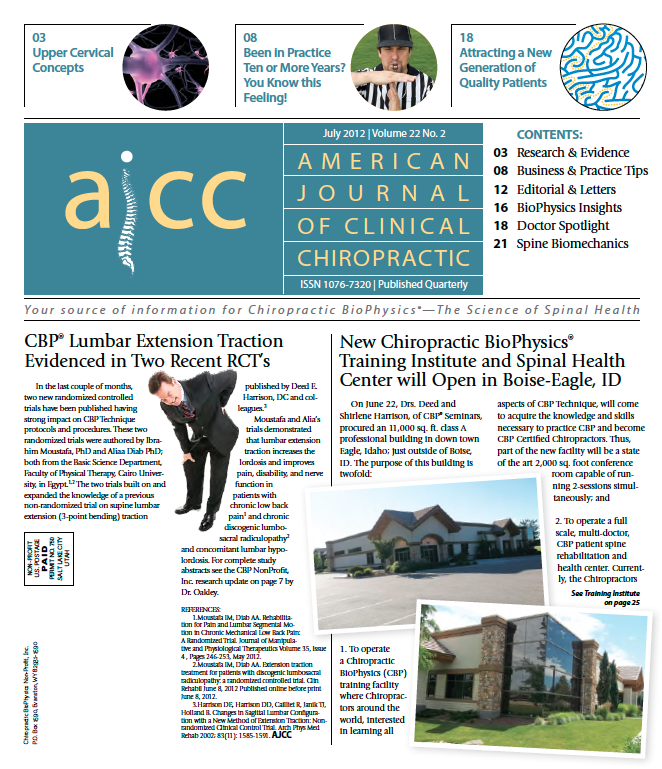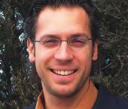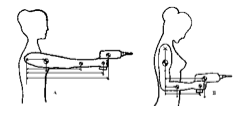Chiropractors Don’t Apply
 Monday, December 17, 2012 at 10:39AM
Monday, December 17, 2012 at 10:39AM 
 Eric Huntington, DC
Eric Huntington, DC
Co-Owner Developer of the Chiropractic Business Academy
drhuntington@chirobizacademy.com
INTRODUCTION
Keys to Practice Success: It may seem inconceivable that the majority of practice owners don’t know what I am about to tell you. But this is probably true, as evidenced by the condition of most clinics. At best, some practice owners may know pieces of this data but don’t apply it. However, with just a little study, you could use it to flourish and prosper in practice.
Defintion of “Hat”: The use of the word “hat” in this article means “the job duties assigned to a position in an organization including what that post is supposed to accomplish”.
- · The Owner Hat:
When I refer to the “owner hat”, I am clearly differentiating it from what most practice owners do on a daily basis. An owner may wear OTHER hats, such as the doctor hat, the ROF hat (sales), the Insurance hat, or any other hat within the organization.
But the true owner hat in a chiropractic practice encompasses things such as goal setting, determining plans of action, handling legal and compliance issues (at least overseeing them), managing key staff (not all the staff), and Public Relations (not marketing)—among other things.
Goal Setting: The owner determines where the organization is going, short-term and long-term. This is a crucial and should be done on a regular basis. However, most owners wear this hat for only a few months prior to opening the clinic and then drop it for the rest of their career.
Prior to things such as the internet and devices such as cell phones, the chiropractor of yesteryear operating a slow practice, probably used the agonizing hours between patients to dream up the future—and ways to get there. Today, it’s easy to fill that time text messaging friends, or surfing the net. It’s important to recognize that there is a big difference between wishing one had more money or a better practice and actually determining goals and figuring out the best strategy to achieve them.
Unknown to most, there are very effective tools you can use to define exactly what you want to achieve. The Chiropractic Business Academy helps chiropractors apply these tools daily.
- · Determine the Purpose(s)
There could be many reasons why you want to achieve your goal(s), or maybe there is just one. That’s up to you. But the main driving force behind most activities in life is the purpose. It’s the reasons one is going for the goal(s).
The purpose behind ANY activity is SO IMPORTANT, that some practice building gurus have packed huge conference rooms offering ONLY one thing—helping chiropractors find or establish a purpose to practice. Despite the fact that focusing exclusively on purpose is rather narrow in scope for a “practice building” seminar it nonetheless can achieve dramatic results.
It’s so powerful that purpose alone, with hardly the application of any other administrative skill, has built some very large chiropractic practices. Albeit, these practices that operate on purpose alone may lack other important components leading to doctor burnout, overworked staff, and low fees, the fact remains that purpose is near the top of the list when it comes to the driving force behind success.
Defining the purpose(s) of the organization and its activities as well as figuring out ways to invigorating the staff with that purpose is part of the owner hat.
The Chiropractic Business Academy helps chiropractors to establish, reestablish or further define their purpose so as to help unleash the fire which drives practice and personal success.
- · Making a Plan
Once you have your goals clearly defined, backed up by YOUR reason for achieving them, the next step is to figure out the plans needed to achieve the goal(s).
You may find it easiest to break up the plans by area of the organization, such as a plan for the marketing, a plan for improving patient care, a plan for improving your report of findings, a plan for training your staff, etc. The key is to determine the general concept of what you want to accomplish and put it into word--, such as “establish a marketing campaign to bring in 10 new patients per week”.
In most cases, you would have several of these plans all which will coordinate to bring your practice from where it is today, to where you would like it to be at some specific point in the future.
As a practice grows, the owner would need to constantly update these plans, and determine new plans to continue the practice toward its goals. Plans need to change for many reasons. Some plans are completed—brought all the way to full execution. Other plans need to be altered because new situations arise. Still other plans need to be dropped all together based on new data.
Establishing and reworking plans is an ongoing process, at least monthly. Monitoring the steps taken to carry out these plans should be a daily and weekly activity of an owner.
The Chiropractic Business Academy helps practice owners establish the exact plans needed to achieve the goals set by that doctor. In fact, one of the first actions CBA does with a new client is to sit down and interview them to find out EXACTLY what that doctor wants to achieve. From the data gathered in that interview, we help the client determine the plans needed to achieve the overall goals. Then we work with that client to develop an exhaustive, in-sequence series of steps needed to carry out the plans.
- · Accountability:
Most importantly, we speak to our clients every week by phone specifically helping them through each step of the plan, ensuring that they take all necessary steps to achieve their goals! Every Week, one on one!
This is in addition to the monthly three- day workshops, chiropractic staff training programs, weekly webinars, our training center which is open 362 days per year, and over 30 courses we offer for practice owners and staff.
We are so sure our program will increase your bottom line that we make that guarantee in our client service agreement.
Call my office today to schedule a free consultation to learn the exact system we have used to help thousands of chiropractors over the last 15 years!
888-989-0855
Put on your owner hat and make the needed changes today to create a better future!
 CBP Seminars | Comments Off |
CBP Seminars | Comments Off | 


















